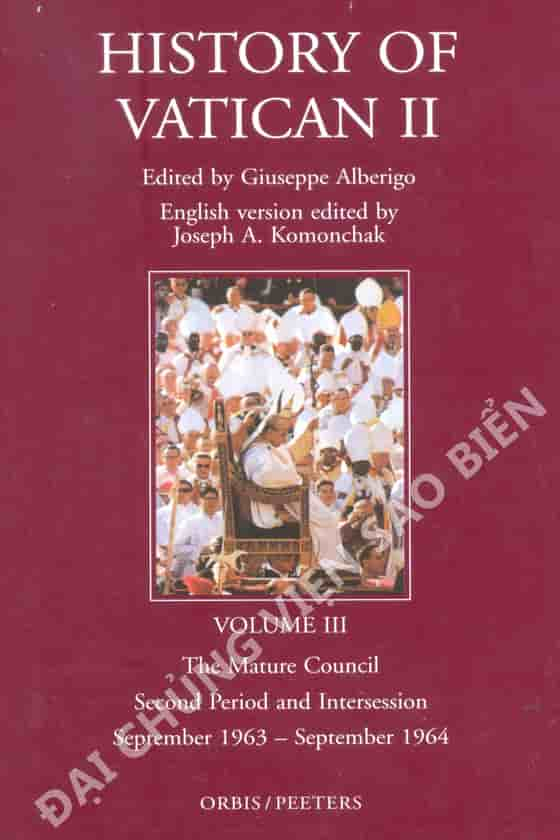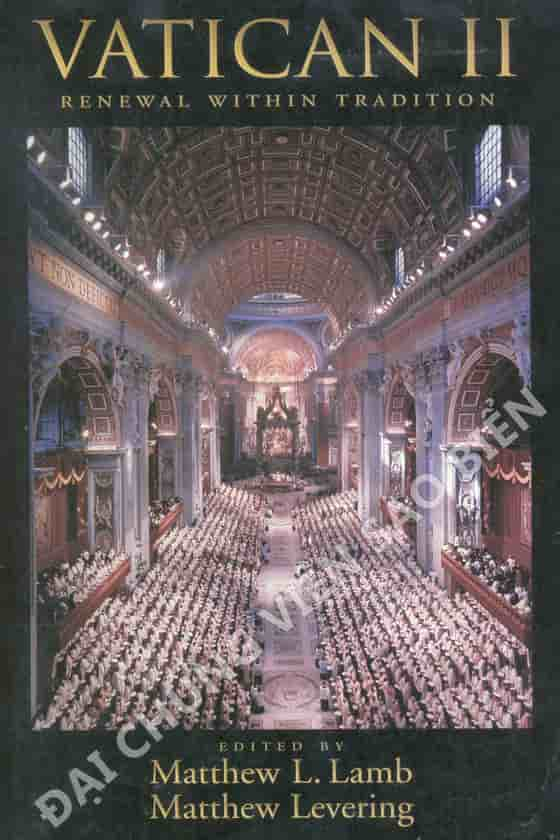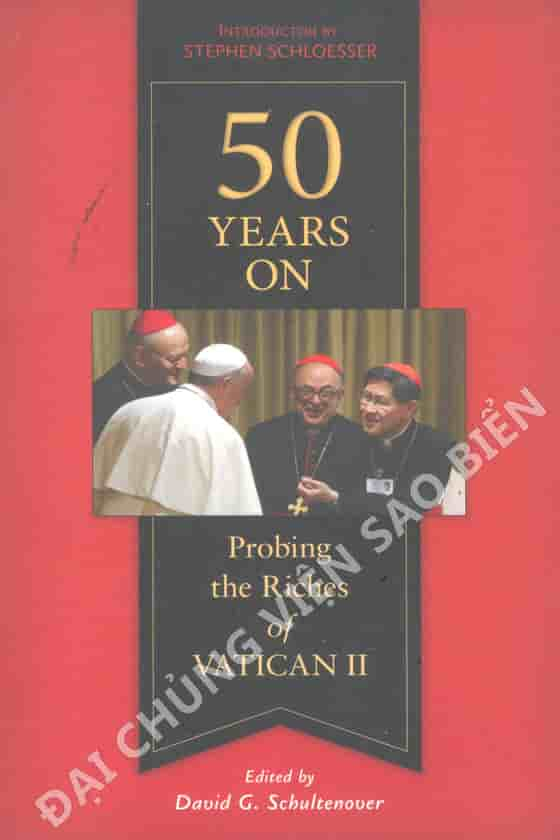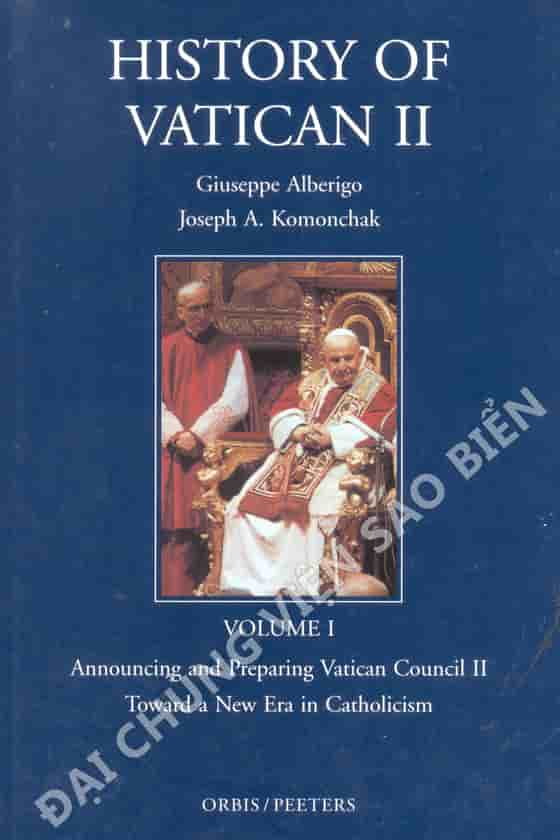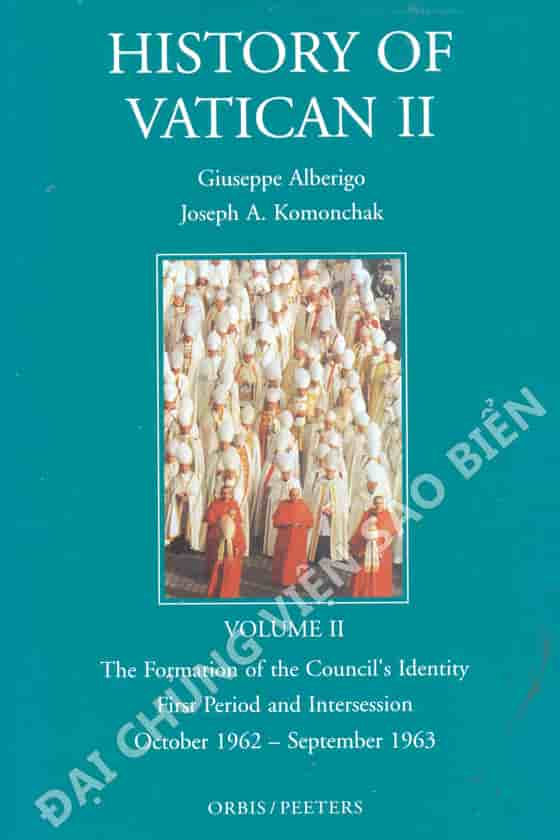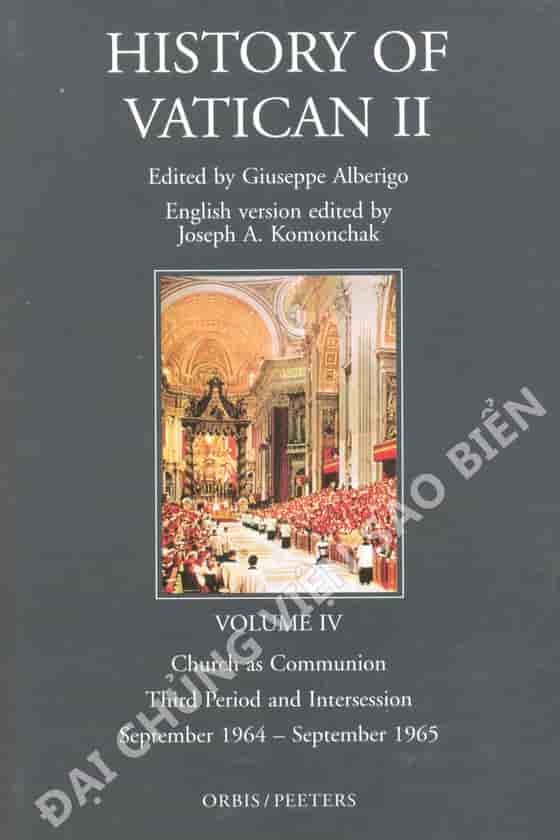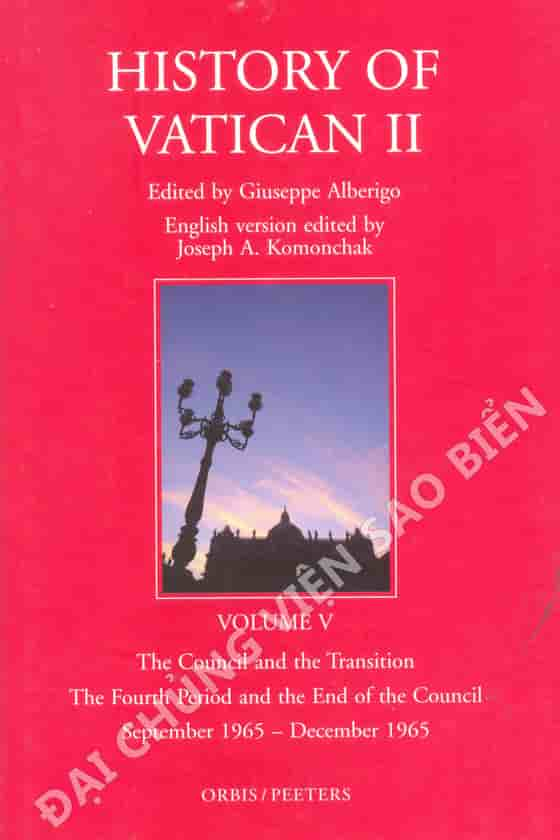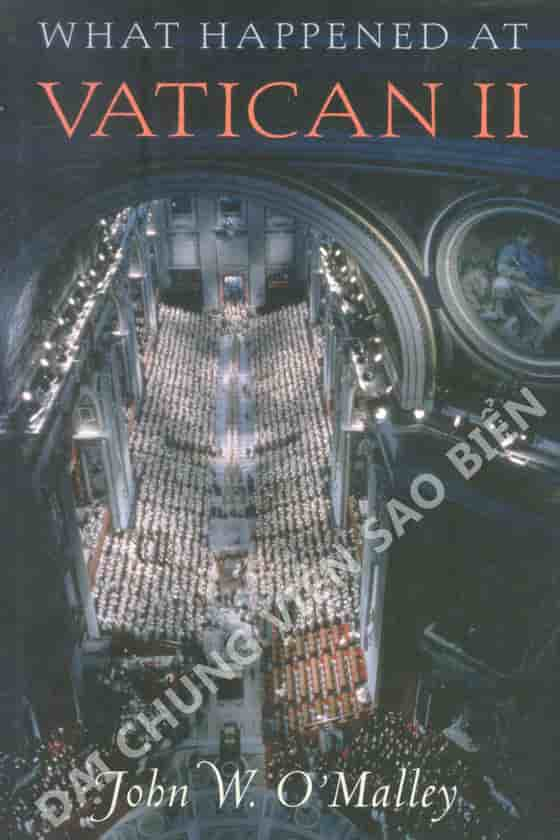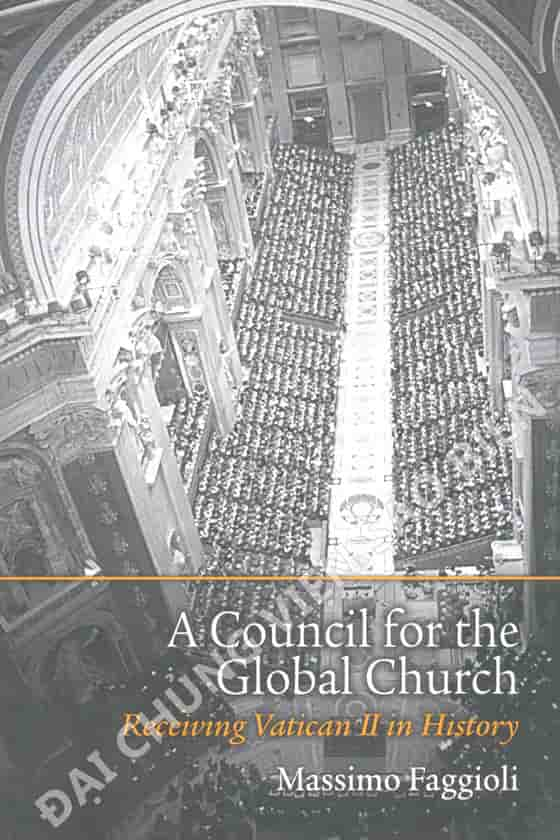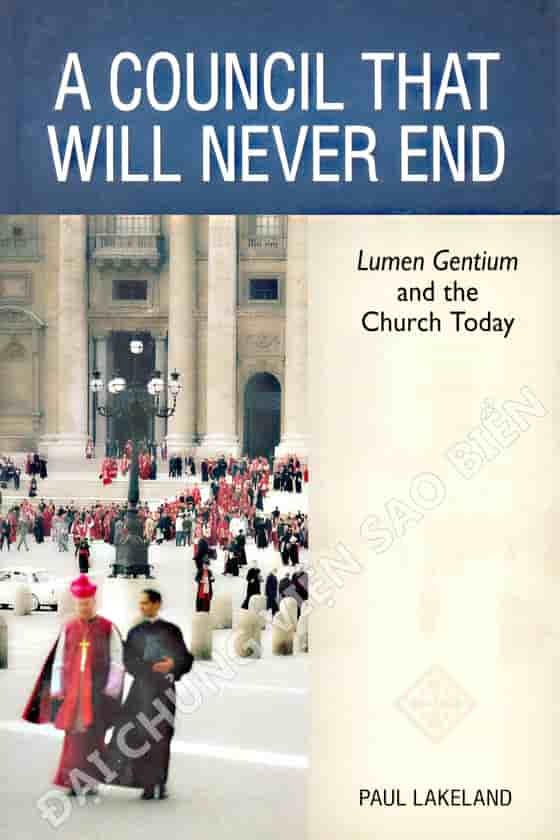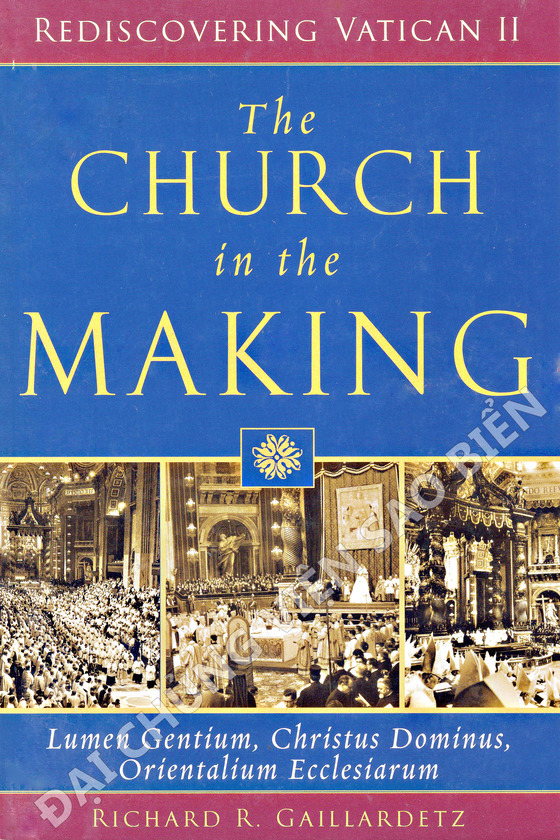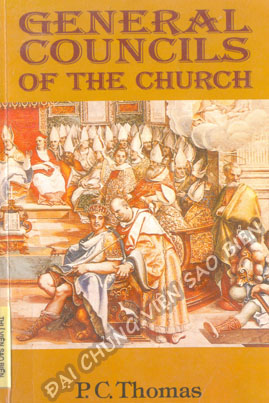| Preface |
xi |
| Abbreviations and Sources |
xv |
| I. THE BEGINNING OF THE SECOND PERIOD: THE GREAT DEBATE ON THE CHURCH [ALBERTO MELLONI] |
| I. Toward a New Beginning with a New Pope |
1 |
| A. The First Steps of Paul VI |
3 |
| B. The Council Approaches: Preparations, Invitations, Letters |
7 |
| 1. The Regulations for the Council (Ordo Concilii) |
7 |
| 2. The Exhortations to The Bishops and The Comforting of The Curia |
13 |
| C. The Council of Paul VI |
16 |
| II. Preparation for the Assembly |
17 |
| A. Meetings of Bishops |
17 |
| B. Problems, Comments, and Positions of Non-Catholics |
20 |
| 1. The Commissions for the Liturgy, Seminaries, and Missions |
22 |
| 2. The Commissions for Bishops |
23 |
| 3. The Commissions for the Lay Apostolate |
24 |
| 4. The Commissions for the Oriental Churches |
25 |
| 5. The Commission for Religious |
25 |
| 6. The Doctrinal Commission |
26 |
| III. The New Beginning: The Return of the Council |
27 |
| A. Journeys and Arrivals |
27 |
| 1. The Bishops |
27 |
| 2. The Laity |
28 |
| 3. The Observers |
29 |
| 4. The Theologians |
30 |
| 5. The Journalists |
31 |
| B. The Opening: September 19, 1963 |
32 |
| 1. The Address of Paul VI |
34 |
| 2. The Complementary Audiences |
39 |
| IV. The Problem of the Schema on the Church: First Steps |
40 |
| A. The Beginning of the Debate |
43 |
| B. The Interventions on the Mystery of the Church (Chapter I) |
47 |
| C. Thematic and Procedural Intersections: Groups and Debates |
52 |
| 1. Slow Resumptions: The Commissions for Missions and Religious, for Seminaries and Clergy, for Oriental Churches, and for Bishops |
52 |
| 2. The Commission for Schema XVII |
53 |
| 3. The Commissions for the Lay Apostolate |
54 |
| 4. The Commssions for the Liturgy |
55 |
| 5. The Secretariat for Christian Unity and Its Proposals |
56 |
| 6. The Doctrinal Commission |
58 |
| 7. Informal Groups |
61 |
| V. The Debate on Collegiality (Chapter II) |
64 |
| A. Partial or Straw Votes |
70 |
| B. The Announcement of the Straw Votes |
74 |
| 1. The crisis of October 16 |
77 |
| 2. The Debate Continues (People of God and Laity) |
80 |
| 3. The Crisis Is Resolved: The Supercommission (October 23) |
83 |
| C. The Crisscrossing of the Debates |
91 |
| 1. The Debate on Religious |
91 |
| 2. The Commemoration of John XXIII |
93 |
| 3. The Marian Question |
95 |
| D. The Meeting of the Doctrinal Commission on October 29 |
98 |
| E. The Choice and the Votes |
102 |
| VI. And Now What? Latent Apprehensions |
105 |
| VII. The Subcommissions for the Shcema on the Church |
108 |
| II. BISHOPS AND DIOCESES AND THE COMMINICATIONS MEDIA (NOVEMBER 5-25, 1963) [Joseph Fameree] |
| Introduction |
117 |
| I. The Schema on the Bishops: |
|
| A Reflection of the Conservative Minority |
121 |
| II. The Roman Curia under Fire |
124 |
| A. A Supreme, Permanent Council of the Universal Church? |
124 |
| B. Defense of Centralism |
126 |
| C. Fring vs. OttaVIani: A Majority-Minority Duel at the Summit |
127 |
| D. The "Reasoned" Address of a Moderator |
132 |
| III. Should a Bishop Receive an Assitant or Resign at a Certain Age |
136 |
| A. Bishop Carli's Report |
136 |
| B. Ruffini Againts Maxioms IV? |
137 |
| C. A "Self-Interested" Debate? |
139 |
| D. An Authoritative Reply to the Attacks of the Minority |
142 |
| IV. Episcopal Assemblies without Juridical Powers |
143 |
| A. A "Purely Pastoral" Basic? |
144 |
| B. Division within the Majority |
145 |
| C. A New Attack on Collegiality |
149 |
| V. "Dioceses NeiTher Too Small nor Too Large" |
152 |
| A. A Minor, Pragmatic Chapter |
152 |
| B. A Debate More "Pastoral" Than Theological |
154 |
| C. An Assessment of Lights and Shadows |
156 |
| D. A Programmatic Report |
158 |
| VI. Numerous Meetings on the Fringes of the Assembly |
161 |
| A. Tuesday Meetings with the Observes |
162 |
| B. The Church of the Poor Group |
164 |
| C. The Conciliar Commissions |
166 |
| VII. The Coestus Internationalis Patrum |
170 |
| A. Catalyst of the Minority |
170 |
| B. Numerous Ramifications |
172 |
| VIII. The Communications Media (November 14-25, 1963) |
175 |
| A. A "Forced March" Vote |
175 |
| B. A Growing But Belated Opposition |
180 |
| C. An Incident Showing the Council's Uneasiness |
183 |
| III. TOWARD THE REFORM OF THE LITURGY [REINER KACZYNKSI] |
|
| I. The Votes during the Second Period |
192 |
| A. The Votes on the Amendments |
193 |
| 1. Chapter II: The Eucharistic Mystery |
193 |
| 2. Chapter III: The OTher Sacraments |
196 |
| 3. Chapter IV: The Divine office |
198 |
| 4. Chapter V: The Liturgical Year |
199 |
| 5. Chapter VI (formerly VIi): Sacred Music |
200 |
| 6. Chapter VII (former VI and VIII): Sacred Art and Furnishing |
201 |
| B. The Activity of the Liturgical Commission |
202 |
| C. The Votes On The Examination of The Modi and The Final Vote |
213 |
| 1. Chapter I |
214 |
| 2. Chapter II |
214 |
| 3. Chapter III |
215 |
| 4. Chapter IV-VII |
216 |
| 5. The Concluding Vote and Public Session |
218 |
| II. The Significance of the Liturgical Constitutuion |
220 |
| A. Description of the Nature of The Liturgy |
223 |
| 1. Liturgy As The Exercise of The Priestly office of Christ |
224 |
| 2. Liturgy Is the Sanctification of Human Beings and the Worship of God |
225 |
| 3. Liturgy Is Performed by Means of Sensible Signs |
227 |
| B. The Community as Active Subject of the Liturgy |
229 |
| 1. Liturgy as Celebration of the Entire Community |
230 |
| 2. Liturgy as Celebration of a Structured Community |
231 |
| 3. Active Participation in the Liturgy |
232 |
| C. The Juridical Organization of the Liturgy |
232 |
| Iii. The Beginning of the Postconciliar Liturgy Reform |
234 |
| A. Activities Having to Do with the Postconciliar Liturgical Reform |
235 |
| B. The Establishment of the Commission for Implementing the Constitutuin on the Sacred Liturgy |
241 |
| C. The Disappointing Mitu Proprio Sacram Liturgiam |
248 |
| 1. The Application of the Liturgical Constitution |
248 |
| 2. The Territorial Ecclesiastical Authority Competent to Apply the Liturgical Constitution |
249 |
| 3. The Suspension of the Law and the Application of the Liturgical Constitution |
249 |
| IV. THE ECUMENICAL COMMITMENT OF THE CATHOLIC CHURCH [Claude Soetens] |
| I. From Program to Reality |
257 |
| A. An Offcial Document on Christian Unity |
257 |
| B. The Debate on Ecumenism |
261 |
| C. Two Sensitive Issues: The Jews and Religious Freedom |
275 |
| D. The Voices of the Non-Catholic Observers |
289 |
| II. A Worrying Problem: The Organization of the Council |
295 |
| A. Who Was Directing the Council? |
295 |
| B. The Doctrinal Commission At The Center of The Disputes |
300 |
| C. Reorganize The Commissions Or Expand Them? |
305 |
| III. A Subdued Ending of the Period |
310 |
| A. Some Situations at the End of the Period |
311 |
| B. Faculties Acknowledged as Belonging to the Bishops |
319 |
| C. The Close of the Conciliar Period |
322 |
| D. Two Documents Are Promulgated |
323 |
| E. The Pope's Address |
330 |
| F. General Impressions |
334 |
| G. The Continuation of the Council |
337 |
| IV. Paul VI in the Holy Land |
339 |
| V. THE INTERSESSION (1963-1964) [EVANGELISTA VILANOVA] |
|
| Introduction |
347 |
| 1. First Phase: The Council's Work on the Basic of the Dopfner Plan |
352 |
| A. Continuation of the Many-Headed Structure of the Council |
352 |
| B. The Meetings of the Coordinating Commission |
354 |
| 1. Prehistory and Context of the Dopfner Plan |
355 |
| 2. Eleventh Meeting of the CC (December 28, 1963) |
359 |
| 3. Twelfth Meeting of the CC (January 15, 1964) |
360 |
| C. The Activity of the Commissions. New Members |
362 |
| 1. Introduction |
362 |
| 2. The Doctrinal Commission for the Schema on the Church |
363 |
| a. The Reworking of the Text |
363 |
| b. The Text on the Blessed Virgin |
367 |
| 3. The Commission for the Schema on Revelation |
372 |
| 4. The Secretariat for Christian Unity |
377 |
| a. The Schema on Ecumensim |
377 |
| b. The Question of the Jews |
380 |
| c. Religious Freedom: From Siple Chapter To Declatarion |
381 |
| 5. The Commission on Bishops and the Government of Dioceses |
382 |
| 6. The Commission for the Lay Apostolate |
384 |
| 7. The Commission for the Missions |
390 |
| 8. The Commission for the Discipline of the Clergy and the Christian People |
393 |
| 9. The Commission for Seminaries, Studies, and Catholic Education |
395 |
| 10. The Commission for the Oriental Churches |
398 |
| 11. The Commission for Religious |
399 |
| 12. The Commission for The Discipline of the Sacraments |
401 |
| D. Schema XVII (February 1-3 and June 4) |
402 |
| 1. The Schema at the Beginning of the Intersession |
402 |
| 2. The First Draft of the Schema during the Intersession |
403 |
| 3. The Zurich Schema |
408 |
| 4. The Maturation of the Schema |
411 |
| II. Second Phase: The Dopfner Plan and the Initiative of Paul VI |
415 |
| A. Thirteenth Meeting of the CC (March 10) |
415 |
| B. Fourteenth Meetinfg of the CC (April 16-17) |
417 |
| C. Sending of the Schemas to the Fathers (May 11 and June 2) |
417 |
| D. The Activity of Some Commissions |
420 |
| 1. The Schema on the Church |
420 |
| a. The Thirteen "Suggestions" of Paul VI on Chapter III |
420 |
| b. The Chapter on the Bleessed VIrgin |
425 |
| 2. The Schema on Revelation |
428 |
| 3. The Secretariat for Christian Unity |
430 |
| a. The Text on the Jews |
430 |
| b. The Text on Religious Freedom |
433 |
| 4. The Decree on Religious Life |
435 |
| III. Final Phase: Fading of the Dopfner Plan |
436 |
| A. The Work of the Cooordinating Commission |
436 |
| 1. Fifteenth Meeting (June 26) |
436 |
| 2. Sixteenth Meeting (September 11) |
437 |
| B. Toward the End of the Council? |
438 |
| 1. The Question of the Council's Duration |
438 |
| 2. The Attitude of Paul VI |
442 |
| 3. The Uncertainty at the Beginning of the Third Period |
444 |
| C. New Changes in the Regulations (July 2, 1964) |
445 |
| 1. The Conciliar Regualtions at the Beginning of the Intersession |
445 |
| 2. The Revision of the Regualtions during the Intersession |
446 |
| D. The Impact of the Encyclical Ecclesiam Suam on the Council |
448 |
| 1. Significance of the Encyclical |
449 |
| 2. The Sources and Content of the Encyclical |
451 |
| 3. The Connection between Ecclesiam Suam and the Council |
454 |
| Iv. The Activity of Some Episcopal Conferences and Local Churches |
457 |
| A. Relations of Bishops with Their People: Pastoral Letters |
457 |
| B. Study of the Schemas |
462 |
| C. The Statutes of the Episcopal Conferences |
466 |
| D. The Start of the Liturgical Reform |
471 |
| 1. The Reform in Central Europe |
473 |
| 2. The English-Speaking World |
475 |
| 3. The Mediterranean Churches |
477 |
| 4. The Liturgical Reform in Latin America |
178 |
| 5. The Challenge of a Radical Inculturation |
481 |
| A. The Liturgy in Africa |
481 |
| B. India in Search of a New Liturgical Model |
484 |
| C. The Necessary Renewal of the Churches of the Far East |
485 |
| E. Ecumenical Relations |
486 |
| 1. A Privileged Contact with Orthodoxy |
486 |
| 2. The World Council of Churches |
488 |
| 3. An Example of Ecumenical Collaboration in Africa |
190 |
| CONCLUSION: THE NEW SHAPE OF THE COUNCIL [GIUSEPPE ALBERIGO] |
|
| I. Continuity amid Novelty |
493 |
| Ii. Crucial Transitions |
496 |
| A. The Church |
497 |
| B. The Liturgy |
498 |
| C. Bishops |
500 |
| Iii. The Councils Begins to End |
501 |
| Iv. The Echo of Major "External Events" |
505 |
| V. Paul VI, Pilgrim to Jerusalem |
506 |
| VI. First Skirmishes of the Postconciliar Period |
507 |
| VII. Toward the Third Period |
508 |
